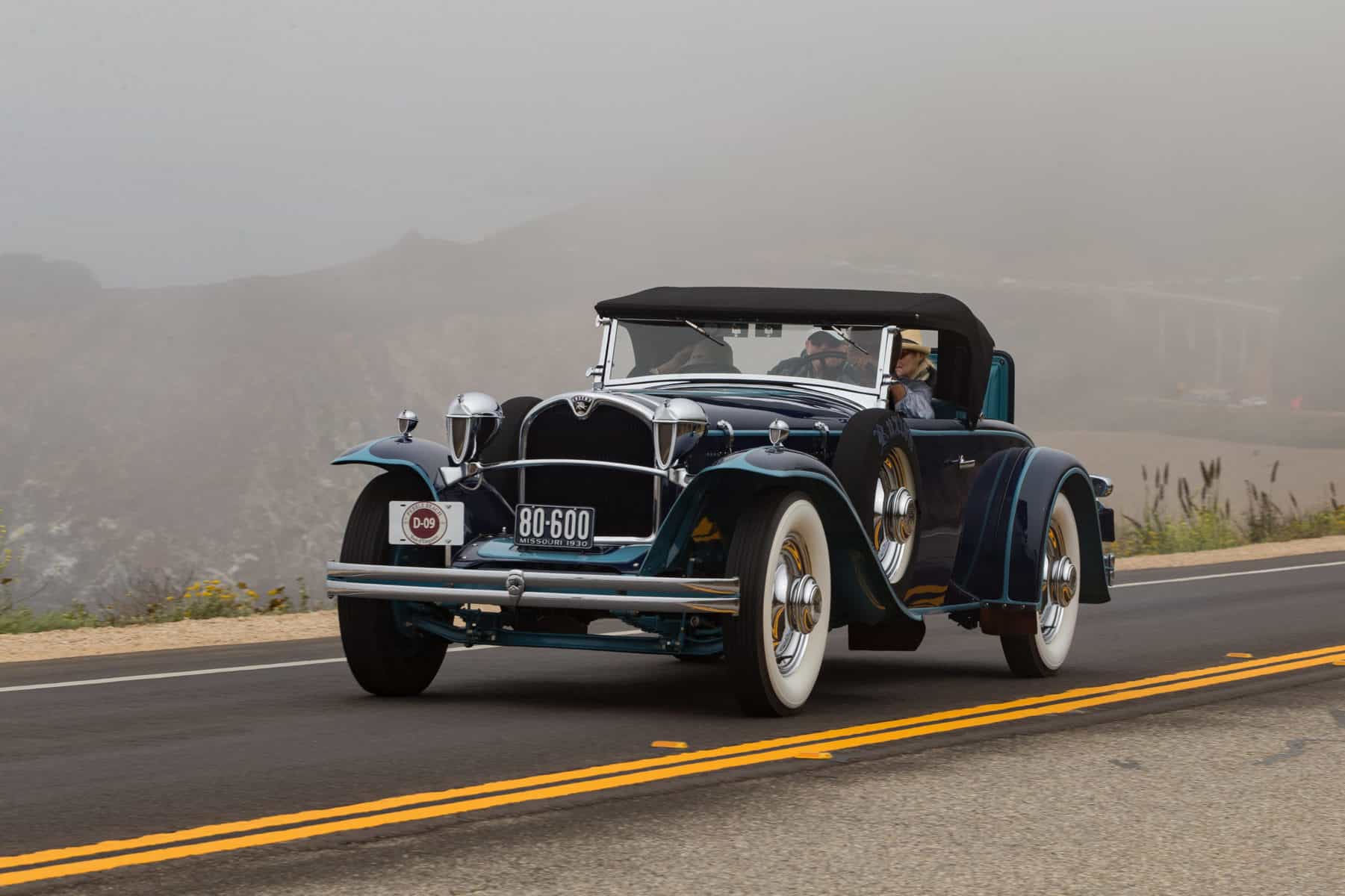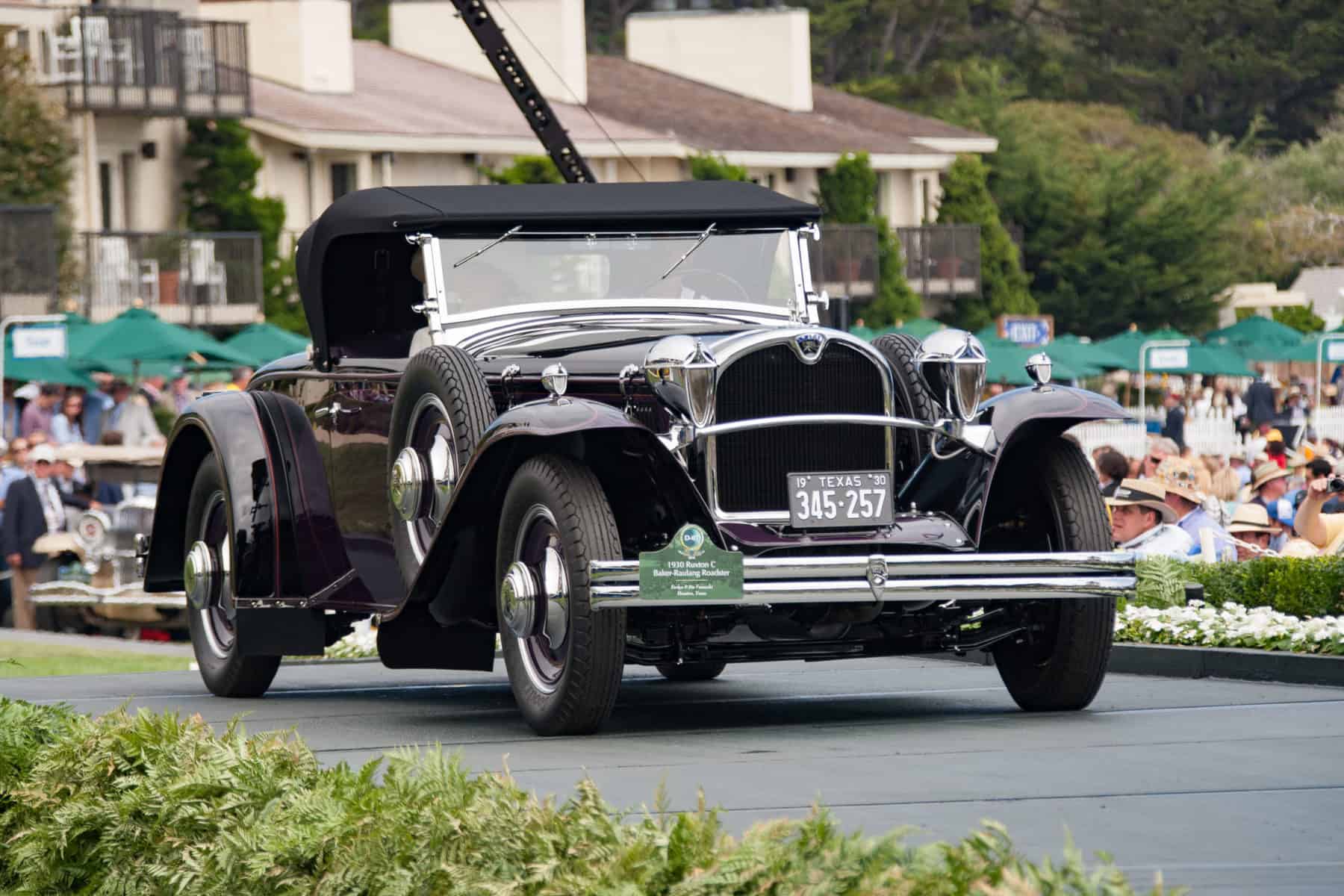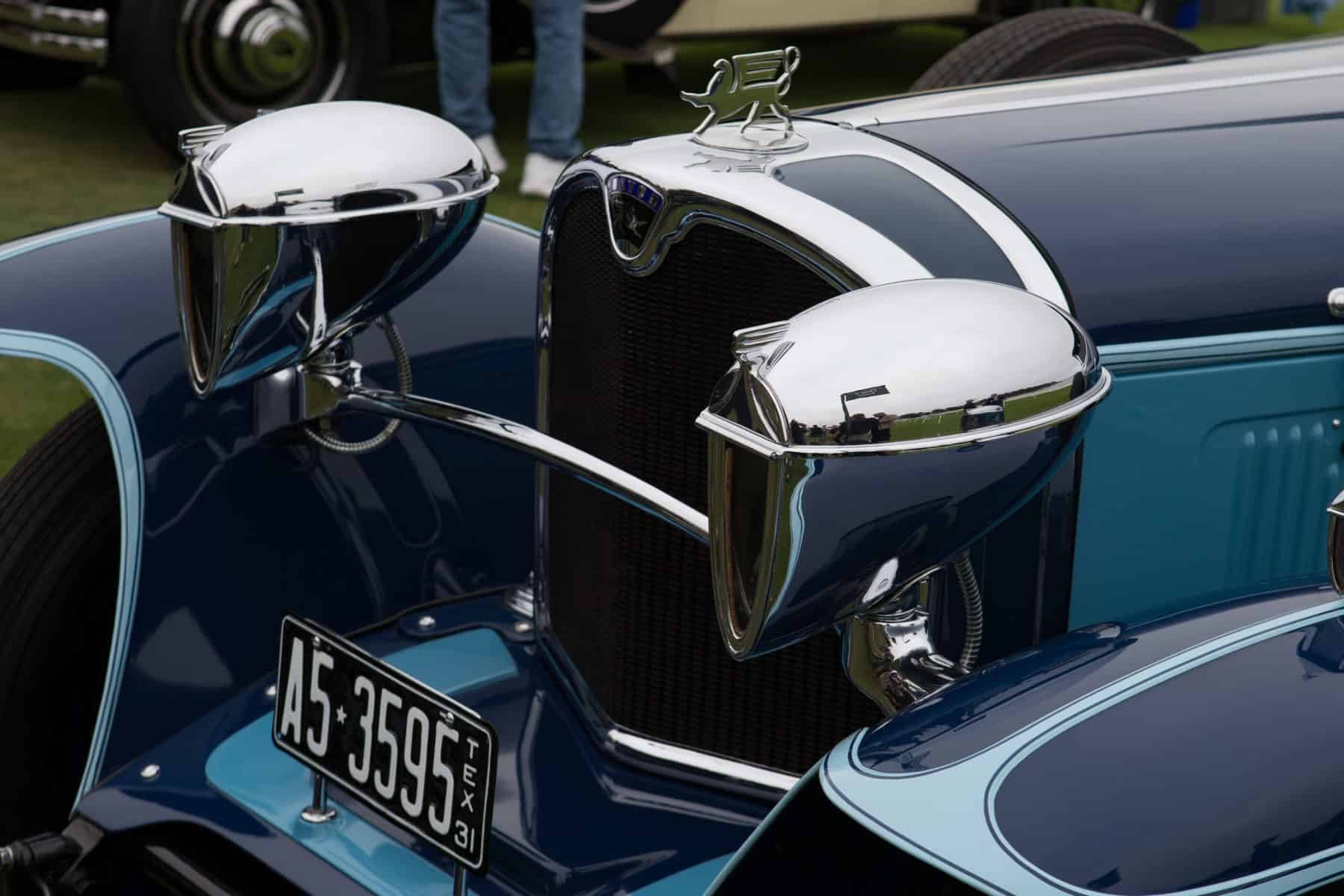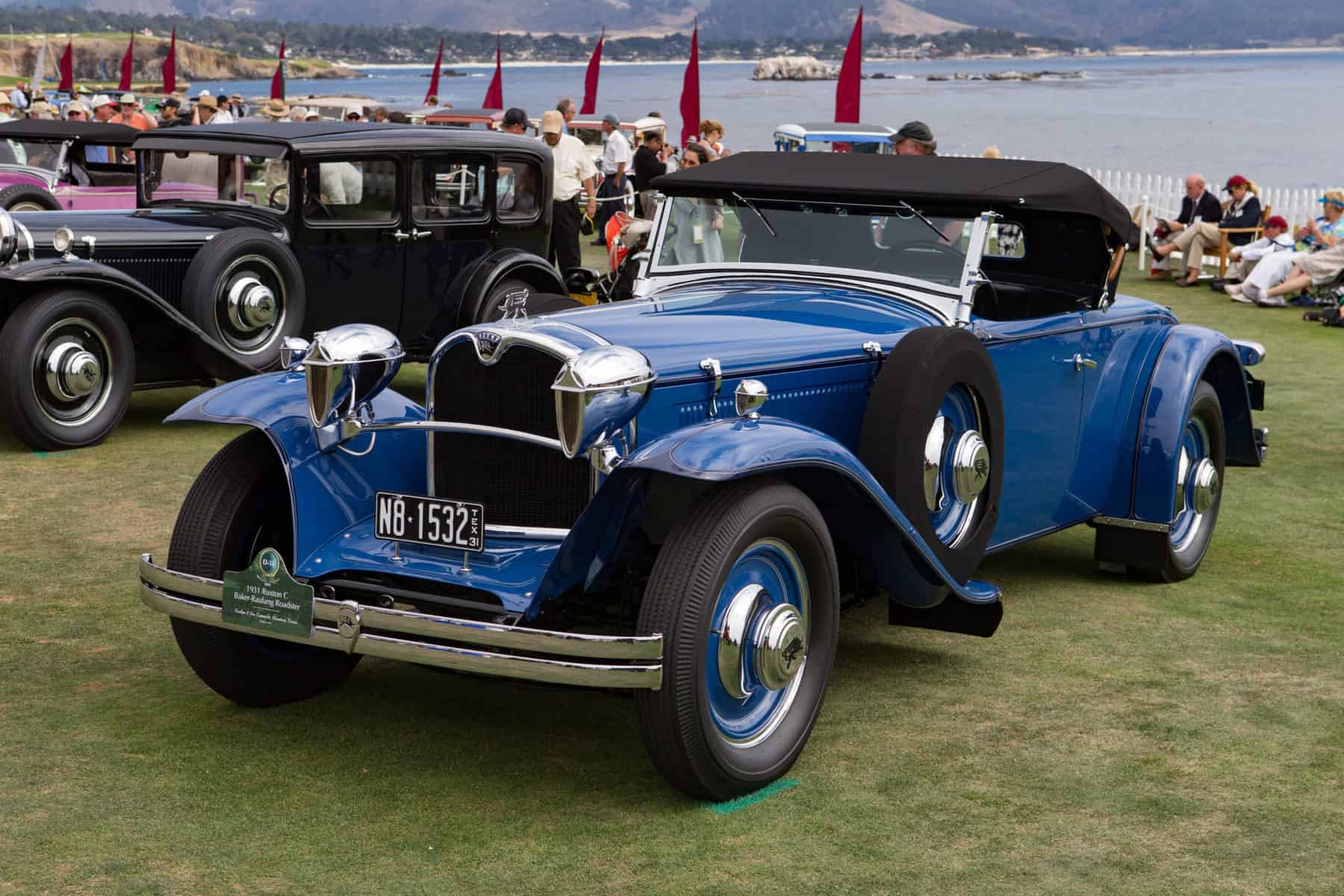The Mythical Ruxton
The greatest American car that never really was
BY: WOUTER MELISSEN
A brilliant idea beautifully executed but also poorly timed and surrounded by controversy – the Ruxton is probably the greatest American car that never really was. Automotive writer Jeffrey Godshall famously titled his fall 1969 article in Automobile Quarterly, “Ruxton: A Superb Automobile That Never Had a Chance.”
The car was the brainchild of the talented engineer William J. Muller, who worked in the experimental department of the Edward G. Budd Company. This was not a manufacturer in its own right but served as a supplier to the automotive industry. Muller came from the world of racing when he joined Budd in 1920. He kept a close eye on the developments in motorsports and was particularly interested in the front-wheel drive systems used on several Indy cars like the Millers.
Muller recognized that the advantages of front-wheel drive would also translate to road cars and pitched the idea to Edward G. Budd in 1926. Budd shared Muller’s enthusiasm and believed a fully functional front-wheel drive system would be a very lucrative product for the Budd Company to sell to a major manufacturer. To demonstrate all the advantages of front-wheel drive, Muller was not only tasked with developing a functioning drivetrain, but also set about creating fully functional prototype.
By the 1920s, the drivetrain of all luxury cars used the same configuration, with the engine and gearbox mounted ahead of the passenger compartment. The rear wheels were then driven through a propellor shaft that ran underneath the car. To clear the conventional drivetrain, the body was mounted on top of the separate chassis. By turning the engine and gearbox around and driving the front wheels, the propellor shaft could be eliminated entirely.
Without a propellor shaft to contend with, the floor of the body could actually sit in between the chassis rails, considerably lowering the overall height of the car. Tasked with the creation of the bodywork for the prototype was Joseph Ledwinka. He reportedly started with a set of sedan body stampings produced by Hupp. This was modified by “channeling” the floors, which allowed the body to hug the chassis. The height of the car was reduced to such an extent that running boards were no longer required. The new body was some ten inches lower than a conventional sedan.
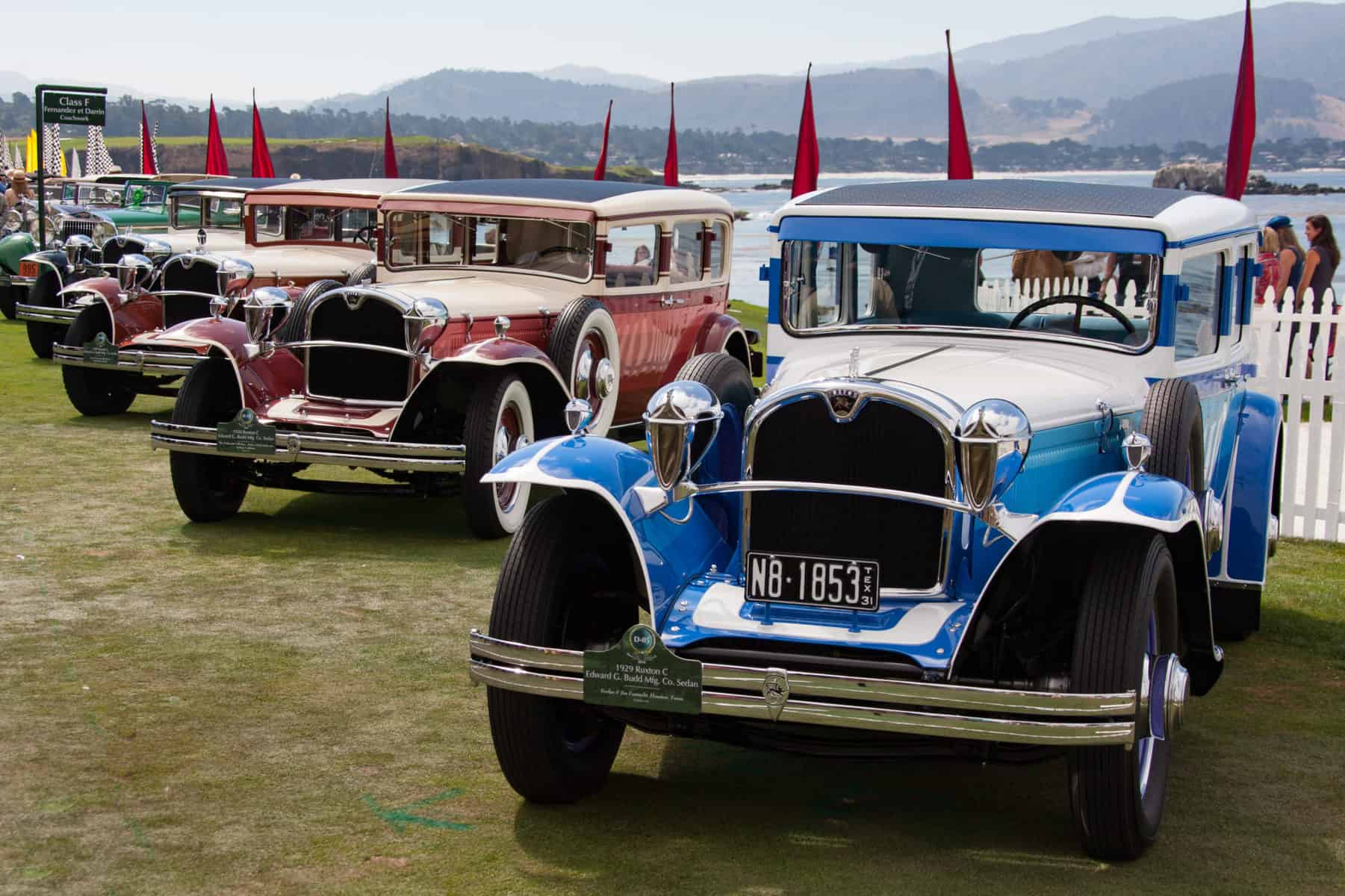
For the prototype, the modified Hupp sedan was mounted on a conventional ladder frame. This was fitted with a six-cylinder Studebaker engine and a Warner three-speed gearbox. This was a temporary solution, which mainly served to prove the front-wheel drive concept. Muller was still hard at work to develop a bespoke gearbox for the final version of the drivetrain. The striking, low-profile prototype was ready in 1928 and received universal acclaim.
One of the people who took note was a Budd board member by the name of Archie Andrews. A notorious and affluent Wall Street trader, he was a major shareholder in the company. With the help of Budd’s second in command, who reportedly owed him a favor, Andrews convinced Muller to move the prototype from Philadelphia to New York while Edward Budd was out of town early in 1929. Muller was put up in a New York hotel with strict instructions not to contact Budd.
Through this shrewd move, Andrews had managed to pry the prototype and its creator away from Budd. He had much bigger plans than Budd and looked at ways to not only sell the technology but instead to market complete front-wheel drive cars. Andrews did not have a factory himself where the car could be built, so he had to find a suitable partner. By March of 1929, a deal was made with the Hupp Automobile Company to further develop and produce the new front-wheel drive car.
Muller continued to refine his front-wheel drive system. The main issue he had to address was the length of the drivetrain. With a conventional engine and gearbox order, the gearbox could be mounted underneath the front bulkhead of the body. This meant that the engine itself determined the size of the engine bay. By turning the drivetrain around, additional room in the engine bay was required, as there was no way the engine could be tucked in under the front bulkhead. A relatively long nose was the unwanted side effect of this.
To address these packaging issues, Muller set about redesigning the gearbox. He came up with a particularly interesting solution: a gearbox that sandwiched the final drive unit. The first and reverse gears were placed in front of the axle and the second and third gears between the final drive and the engine. As a result, the engine could be mounted closer to the front axle, which allowed for a shorter engine bay and also moved the weight of the engine farther forward, improving traction of the driven wheels.
The partnership with Hupp only lasted a month and by April of 1929, Andrews again had to find a manufacturer to partner with. To allow for outside investments to be made, he established a new company known as New Era Motors. This was not going to be the name of the car as Andrews had devised a plan to name the car after a potential new investor; a clever way to attract more capital. Having no name yet also added some intrigue to the project, which generated more publicity.
The investor Andrews had singled out was William V.C. Ruxton, a prominent Wall Street investment banker. Andrews went to see Ruxton together with Muller in the prototype. Ruxton was certainly interested in the car and a trade between Andrews and Ruxton was agreed. Andrews wasted no time and announced that the new car would be named Ruxton after its new investor. Ruxton himself had not been aware of this and soon thereafter withdrew his involvement. He sued Andrews but the attempt to stop his name being used proved fruitless.
While now settled on the name of the car, the small issue of finding a factory to build the Ruxton still had to be addressed. There was a brief agreement with the Gardner Motor Company that fell through, as did talks with Marmon. Fourth time lucky, it seemed, as a deal with the St Louis-based Moon Motor Car Company was agreed. The deal remained friendly only briefly as after a dispute, Andrews started manipulating Moon stock by buying up stock, selling it again, and then, after the price had plummeted, buying it up again. The result was a hostile takeover that was settled in Andrews’ favor after a stand-up between Pinkerton security officers hired by Moon and the St. Louis police.
Meanwhile, Andrews had started a massive media campaign promoting the new Ruxton. His four-page advert read: “Utterly Different is the Ruxton and Ten Inches Lower than Any Other Motor Car.” Conveniently timed, the announcement came one month before the front-wheel drive Cord L-29 was launched. This used a Miller-patented drivetrain and was not quite as low and slightly heavier than the Ruxton. While initially beaten to the punch by Ruxton, Cord did manage to start production earlier, making the L-29 the first front-wheel drive passenger car built in significant numbers.
While the way he conducted business was far from beautiful, Andrews had a good sense of style. He called in the help of famous New York set designer Joseph Urban to provide striking liveries for the Ruxton. Truly unique, the Urban color schemes consisted of two or even multiple brightly colored tones. Further increasing the appeal of the Ruxton to the wealthiest of customers, Schumacher of New York was commissioned to supply the fabrics for the interiors.
Sadly, there were still very few cars for Urban to paint and Schumacher to upholster. A second prototype with a spectacular Roadster body by Baker-Raulang had been completed by October of 1929. It was shown at the New York Grand Central Palace show. Shortly thereafter three further cars were shown at the Chicago Auto Show. The first Urban-liveried Ruxton was shown at the 1930 New York Auto Show and featured a two-tone green color scheme.
Although the initial four-page ad had suggested that as many as 12,000 Ruxtons would be produced before the end of 1929, series production had not started by the start of 1930. The rush to beat Cord had caught up with New Era Motors as the Ruxton really was not quite ready for production. Muller was still developing the drivetrain components when the first parts were ordered, so many of these could not actually be used. Long delays were the result.
In its “production-ready” form, the Ruxton combined Muller’s innovative gearbox with a straight-eight supplied by specialist engine-builder Continental. The 4.4-liter engine produced a respectable 100 hp at 3,400 rpm. The Ruxton was offered with a choice of standard bodies, which included the roadster produced by Baker-Raulang and a sedan that was quite remarkably sourced from Budd. Edward Budd clearly was more interested in the business rather than hard feelings. The price for both the Roadster and Sedan was set at $3,195, which was comparable to the similarly bodied Cord L-29s.
In an attempt to drum up maximum media attention for the fact that the car still had no name, the original prototype had literally sported a big question mark as the hood ornament. Once the Ruxton name had been adapted, the question mark was replaced by a griffon both on the radiator cap and the badge placed on the radiator cowling. Among the options were “cat’s eyes” Woodlite lights. Available to other manufacturers as well, the Woodlites fitted to the Ruxtons were custom made and featured subtle griffon wings. While they looked spectacular, Ruxton customers who actually intended to drive their car at night were much better off with round headlights.
Even with the specification finalized a further complicating issue was that the Moon Motor Company really was not capable of actually producing the Ruxton in sufficient numbers. It was of little consequence as the October 1929 Wall Street Crash had also reduced demand for luxury vehicles. Andrews did not give up and actually took advantage of the difficult financial situation of rival companies in a renewed quest for a factory to mass produce the Ruxton.
The latest partner would be Kissel, who had been initially been asked to construct the unique Ruxton drivetrain. Soon after partnering with Kissel, Andrews was up to his old tricks and tried to take control of the company. The two Kissel brothers, George and Will, stood up to his practices and thwarted the effort placing the company in voluntary receivership. This proved to be the final spanner in the Ruxton works and by November of 1930, the Moon Motor Company filed for bankruptcy. New Era Motors followed five days later.
This brought the story of the Ruxton to a premature end. While Andrews’ conduct warranted little sympathy, the car and its revolutionary drivetrain certainly deserved a better champion and fate. Illustrative of how highly the Ruxton was rated was the fact that George and Will Kissel retained their personal phaetons until the end of the decade. Even though the car had contributed to the demise of their company, they were always full of praise for the front-wheel drive machines.
Period publications suggested that as many as five hundred Ruxtons had been built, but more recent research by marque specialist Jim Fasnacht revealed that no more than ninety-six were produced. Some of these were completed after the bankruptcy of Moon and New Era Motors. It is believed that only thirty to forty examples were actually sold to a customer. Although Andrews’ part in the Ruxton story unfolded over a period of just two years, some of the resulting lawsuits, particularly those concerning the Moon Motor Company, would take a staggering thirty-five years to settle.
Fortunately, the final chapter of the fascinating story are the nineteen Ruxtons that are known to have survived. Of these, no fewer than seven are owned by Fasnacht, who also wrote the definitive book on the subject, The Ruxton Automobile. At the 2014 Pebble Beach Concours d’Elegance, Ruxton was one of the featured marques and the special class featured no fewer than sixteen of the nineteen examples still in existence.
